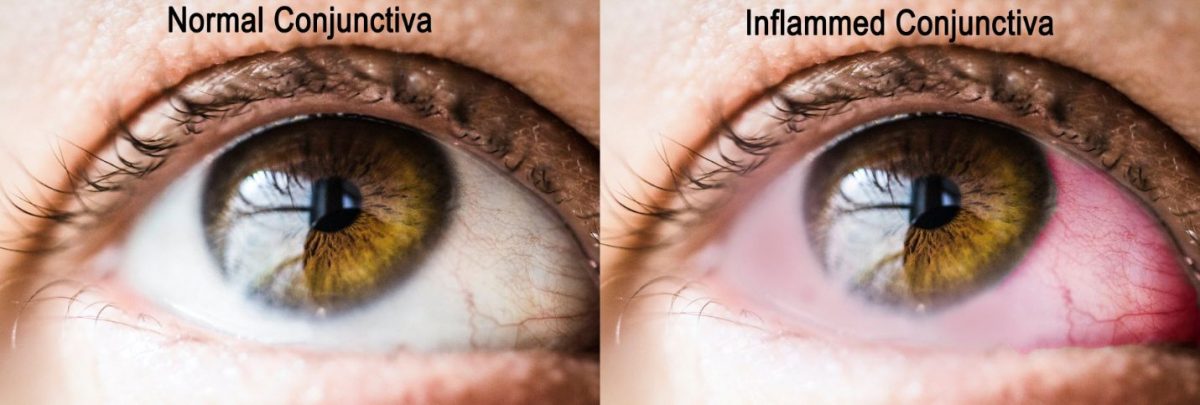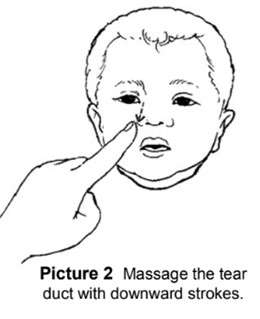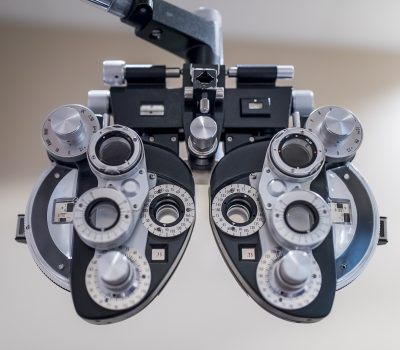Pink Eye (Conjunctivitis) And How It Affects Children

What is Conjunctivitis (pink Eye)?
Conjunctivitis, more commonly referred to as pink eye, is caused when the thin clear tissue covering the white of the eye and lining the eyelid becomes inflamed.
What Causes Conjunctivitis?
Conjunctivitis, which can appear in one or both eyes, is most often the result of an infection caused by a virus or bacteria. The white part of the eye appears pink because the small blood vessels in the eye become inflamed and thus more visible.
A range of different viruses and bacteria can cause conjunctivitis, and these varieties of the condition are highly contagious and so can be easily be passed on from person to person.
Conjunctivitis can also be the result of allergies, in which case it will usually affect both eyes. Pink eye occurs when the body reacts to an allergen (such as pollen, pet hair or make up) by producing histamines, which in turn lead to symptoms developing.
Pink eye can also be caused by a foreign object in the eye or wearing contact lenses that haven’t been properly cleaned. A chemical splash can also cause conjunctivitis.
Paediatric ophthalmologists have found that conjunctivitis in newborn children often occurs as the result of a blocked tear duct, infection, or chemical irritants.
Are There Different Types of Conjunctivitis?
As above, there are three main types of conjunctivitis:
- Viral conjunctivitis
- Bacterial conjunctivitis
- Allergic conjunctivitis
Viral conjunctivitis is the most common form, and symptoms can include red, burning eyes and a watery discharge. It will usually appear in both eyes and is very contagious, meaning it can spread quickly and easy between family members and others.
Bacterial conjunctivitis occurs when the lining of the eyelid and eye membrane become infected with bacteria. The symptoms include red eyes, soreness, and a mucous or pus discharge from one or both eyes, and the condition is highly contagious.
Allergic conjunctivitis occurs when the membrane of the eye reacts to an allergen. It may cause the eyelids to become puffy, and a watery discharge to be produced. Eyes will also likely feel itchy, and look red and watery. This form of conjunctivitis is not, however, contagious.
In some cases, the symptoms are similar to those associated with pterygia, although pterygium treatment is different to that required for conjunctivitis.
Conjunctivitis In Infants Symptoms
Paediatric ophthalmologists have found that infants and newborn children can be at a high risk of pink eye. It can be the result of chemical irritants, infection, or a blocked tear duct.
Conjunctivitis can also be picked up during birth, when bacteria in the mother’s vagina are passed to the baby. This can be healthy bacteria that is normally found in a woman’s vagina, or more harmful bacteria, such as those associated with sexually transmitted diseases (STDs).
The most common symptoms of this form of bacterial conjunctivitis include a mucous, pus, or thick yellow discharge from the eye(s) that can crust over the eyelashes, along with redness, irritation and swelling. Your eye specialist for kids will prescribe an antibiotic and may recommend that you use a warm flannel to wipe away the crust and discharge, or a saline solution to help rinse out your baby’s eyes. In some cases, they may prescribe an antibiotic.
Newborn children and infants can also suffer from conjunctivitis as a result of having a blocked tear duct. Infants can have blocked tear ducts since birth and cause sticky discharge and watering in one or both eyes due to inadequate drainage of tears. Most of their symptoms get better in first year of life and sometimes may need massaging the tear sac area to improve drainage. If your child has similar symptoms, you can perform tear sac massaging as below:
However, if it has not cleared up by the time your child is 1 year old, you may need to visit a Paediatric eye specialist in Adelaide clinic for a procedure to repair the problem.
What Causes Pink Eye In Children?
One of the reasons children are so susceptible to pink eye is because viral and bacterial conjunctivitis can be highly contagious, especially in crowded environments. Therefore, it can be readily passed on at school, kindergarten or day care.
If your child does come home from school with red, watery or irritated eyes, you should consult a paediatric ophthalmologist near you to determine what form of the condition they have, and what treatment, if any, is necessary.
Cataracts in children are relatively rare, but if the above sort of eye problems persist you should consult an eye specialist for an eye health check up.
What Conjunctivitis Treatment Is Available?
Pink eye can be panful and irritating, but it will usually not have a long term impact on vision. Nevertheless, early treatment is always advisable to prevent it from spreading. The form of treatment required will depend on the type of conjunctivitis you or your child has.
Viral conjunctivitis will usually require no specific treatment, as the body has its own mechanisms for fighting viruses. However, the symptoms can be eased by using a cool cloth or flannel over the eyes to help relieve irritation.
Your paediatric ophthalmologist in Adelaide may recommend antibiotic eye drops in the case of bacterial conjunctivitis, or another form of eye drop if pink eye is caused by an allergy, in order to reduce any swelling and irritation.
An eye wash or rinse can be used to in the case of conjunctivitis caused by an irritant getting into the eye.
Effective Pink Eye Prevention Practices
The best way to prevent viral or bacterial conjunctivitis is to adopt hygiene practices that will help to stop the spread.
For instance, washing hands thoroughly and regularly (especially after going to the bathroom, sneezing or coughing) is very helpful, as is avoiding touching your eyes. Using clean towels and handkerchiefs is also a useful preventative measure.
If you wear makeup, it should be replaced if you have pink eye or any type of eye infection, and you should not share it with others.
If you wear contact lenses, make sure you clean them regularly and thoroughly according to the directions of your paediatric ophthalmologist. You may need to cease wearing contact lenses and eye makeup until your eye condition improves.
When Should I Visit A Paediatric Ophthalmologist For Pink Eye?
In the case of a newborn baby or infant with pink eye, it is important to consult an eye specialist for kids to determine what has caused the conjunctivitis and what treatment may be required.
For instance, antibiotics may be required to treat an infection, or in the case of blocked tear ducts, it may be necessary to undergo a procedure at a corrective eye surgery in Adelaide to rectify the problem.
When children reach school age, you should consult an eye specialist for pink eye if there is a large amount of discharge coming from their eye(s), or if they wake in the morning and find their eyelids are crusted over.
If your child is exhibiting signs of light sensitivity (e.g., finding it difficult to look at bright light) or their vision is any way impacted, then it is highly recommended that you visit a paediatric eye specialist as soon as possible.




